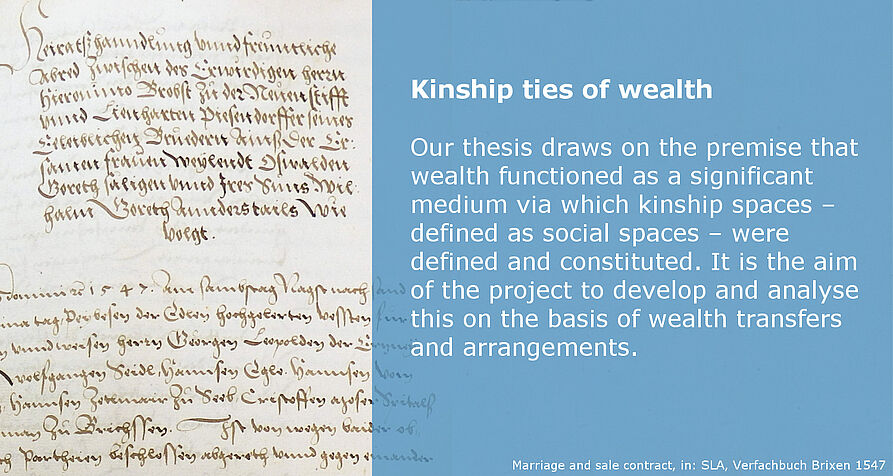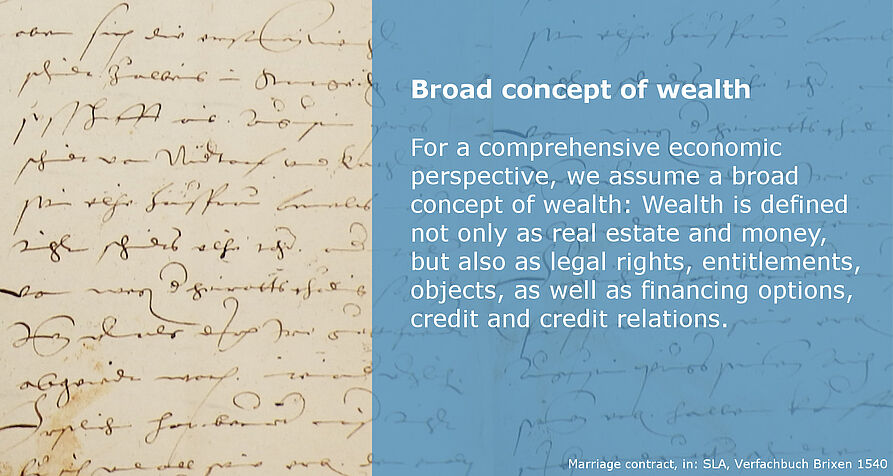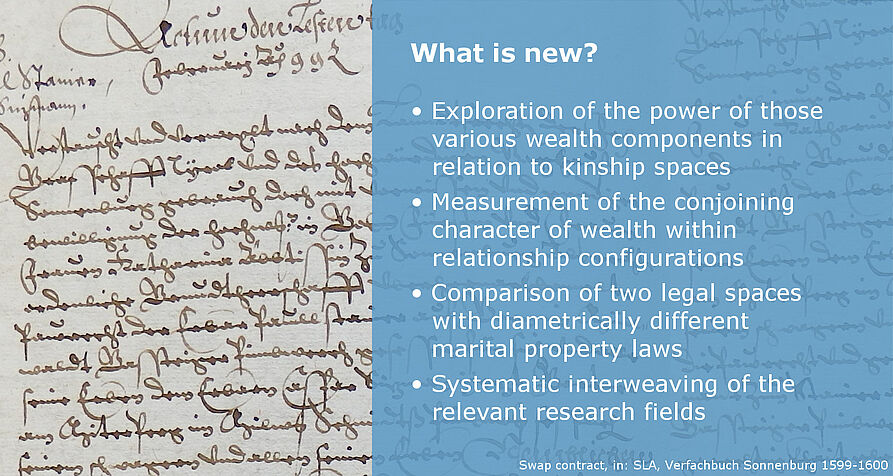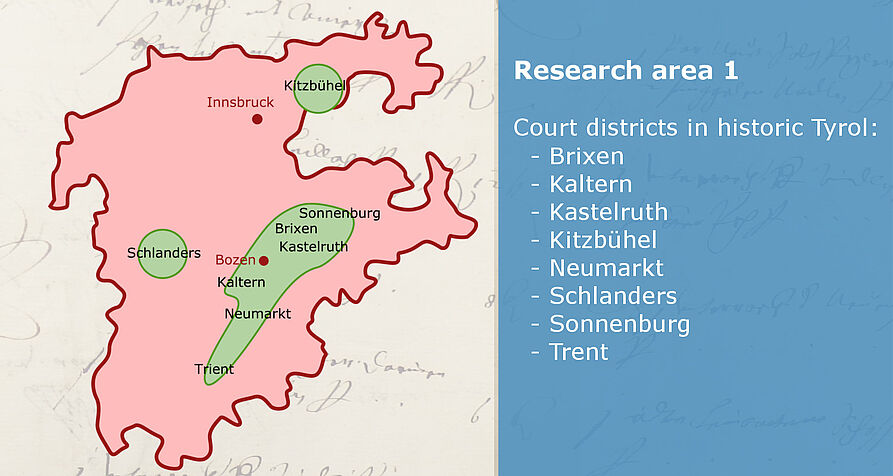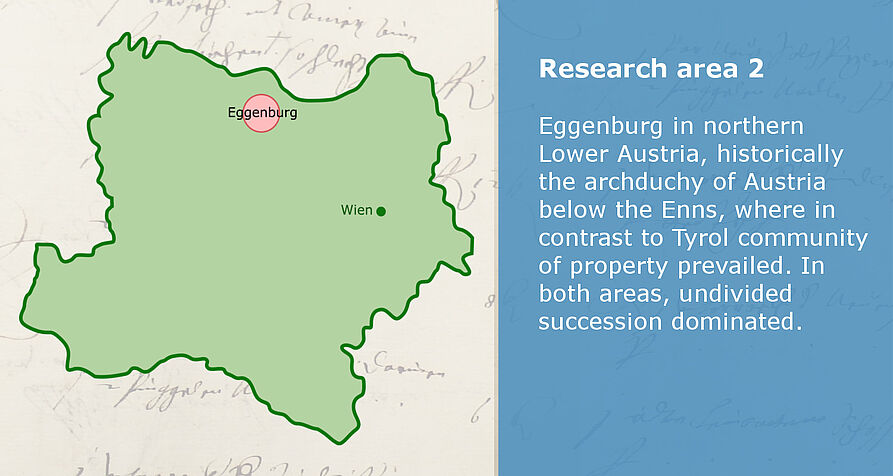The Role of Wealth in Defining and Constituting Kinship Spaces from 16th to the 18th Century
The preceding project started from the fact that the bulk of wealth in early modern European societies was transferred and acquired via marriage and inheritance. Rights of and claims to inheritance were closely linked to kinship. This consequently gave rise to a central axis of competition. The options to act and the way in which these options were exercised in practice depended on the models of marital property and inheritance that were in force and how they interplayed.
The fundamental hypothesis of the follow-up project picks up on this fact to surmise that wealth functioned as a significant medium via which kinship spaces were defined and constituted. In this context, kinship spaces can be defined as social spaces that are constructed via communication and interaction, processes of negotiation, and competition and conflicts. Just how this construction and structuring of kinship spaces took place is the core research question. In order to gain a solid impression, it is necessary to analyze wealth transfers and wealth arrangements with regard to their social, generational, and gender-specific implications.
In the project’s view, wealth encompasses not only real estate and money, but also rights and claims derived therefrom as well as objects that were possible stores of value, of symbolic significance, or of utility in everyday life. The follow-up project broadens the concept of wealth by adding the question of financing real estate purchases and of credit and credit relations. The project inserts itself into several fields of research that are currently widely debated: historical kinship studies, gender history, history of material culture, history of consumption, history of credit relations and history of social and economic inequality. The heuristic potential can be considered quite high. One innovative aspect of the follow-up project is the targeted and systematic interweaving of these fields in order to achieve an integrated perspective.
Southern Tyrol remains the ideal laboratory in which to pursue the project’s goals, especially for its very high volume and density of source material on early modern civil-law matters. The follow-up project also broadens the comparison of legal spaces by including Lower Austria where in contrast to Tyrol community of marital property prevailed. In order to create the basis for quantitative and qualitative analysis, we collect and process relevant documents of specific sample years and reconstruct case studies through document linkage based on an approach focused on practices.
Project 1:
Project number: P29394-G28 | Project: 1 September 2016 - 29 February 2020
Project leader: Univ.-Prof. Dr. Margareth Lanzinger
Project team members: Dr. Janine Maegraith, Mag. Johannes Kaska (since October 2017), Dr. Birgit
Heinzle (March–September 2017)
The project starts from the fact that the bulk of wealth in early modern European societies was trans-
ferred and acquired via marriage and inheritance. Rights of inheritance and claims to inheritance were closely linked to kinship. Full Text



